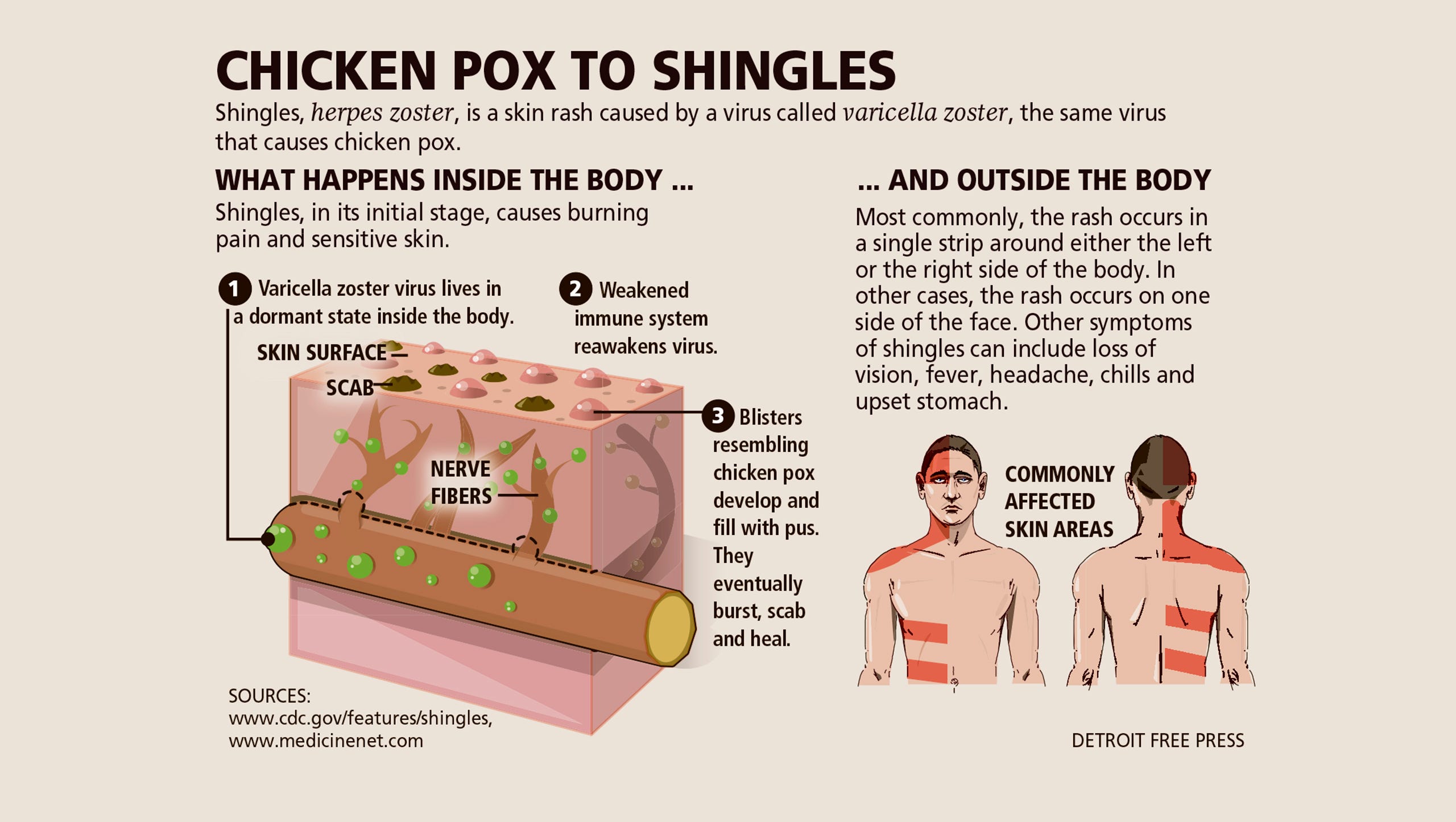Rashes that look like herpes. Skin Rash vs. Herpes: Key Differences in Symptoms and Appearance
How do herpes sores differ from other skin rashes. What are the distinguishing characteristics of herpes blisters. Can common skin conditions be mistaken for herpes. What are the main types of skin rashes and their causes.
Understanding Herpes: Types and Symptoms
Herpes is a viral infection caused by the herpes simplex virus (HSV). There are two main types:
- HSV-1: Typically causes oral herpes (cold sores or fever blisters)
- HSV-2: Usually responsible for genital herpes
The hallmark symptom of herpes is the appearance of fluid-filled blisters. These blisters have a distinctive “wet” appearance and tend to crust over when they rupture. Herpes sores commonly occur around the mouth, lips, or genital area.
Common Symptoms of Herpes
While some individuals with herpes may not experience noticeable symptoms, the most frequent signs include:
- Fluid-filled blisters
- Itching or burning sensation before sore appearance
- Flu-like symptoms
- Discomfort during urination
Differentiating Skin Rashes from Herpes
A skin rash is a general term for inflammation of the skin, which can be caused by various factors. Unlike herpes, rashes can appear anywhere on the body and often have different characteristics.
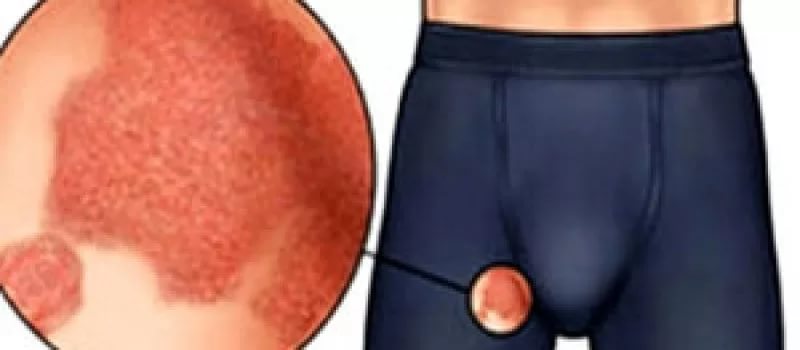
Typical Rash Symptoms
Common symptoms that distinguish rashes from herpes include:
- Redness
- Swelling
- Itching
- Scaling
While these symptoms may overlap with herpes in some cases, the overall appearance and location of rashes often differ significantly.
Common Skin Conditions Often Mistaken for Herpes
Several skin conditions can be confused with herpes due to similar symptoms or affected areas. Understanding these conditions can help in differentiating them from herpes infections.
Dermatitis: Contact and Atopic
Dermatitis is a broad term for skin inflammation. The two main types are contact dermatitis and atopic dermatitis (eczema).
Contact dermatitis occurs when the skin reacts to an irritant or allergen. Symptoms include:
- Red, itchy skin
- Possible blistering
- Localized rash where contact occurred
Atopic dermatitis, or eczema, is characterized by:
- Thick, scaly, red patches of skin
- Intense itching
- Can appear anywhere on the body
Unlike herpes, dermatitis is not contagious and can be managed by avoiding triggers and maintaining proper skin care.

Shingles: A Painful Rash
Shingles is caused by the reactivation of the varicella-zoster virus, which also causes chickenpox. Key features of shingles include:
- Painful, itchy rash
- Fluid-filled blisters
- Typically appears in a band or small area on one side of the body
While shingles can produce blisters similar to herpes, its distinct pattern and intense pain set it apart.
Identifying Jock Itch and Other Fungal Infections
Fungal infections like jock itch can sometimes be mistaken for herpes, especially when they occur in the genital area.
Characteristics of Jock Itch
Jock itch, or tinea cruris, is a fungal infection that affects the groin area. Its symptoms include:
- Red, itchy rash in the groin or inner thigh area
- Raised, scaly border
- Burning sensation
Unlike herpes, jock itch does not produce fluid-filled blisters and is typically confined to the groin and upper thigh region.
Allergic Reactions: Another Source of Skin Irritation
Allergic reactions can cause skin rashes that may be confused with herpes, especially if they occur around the mouth or genital area.
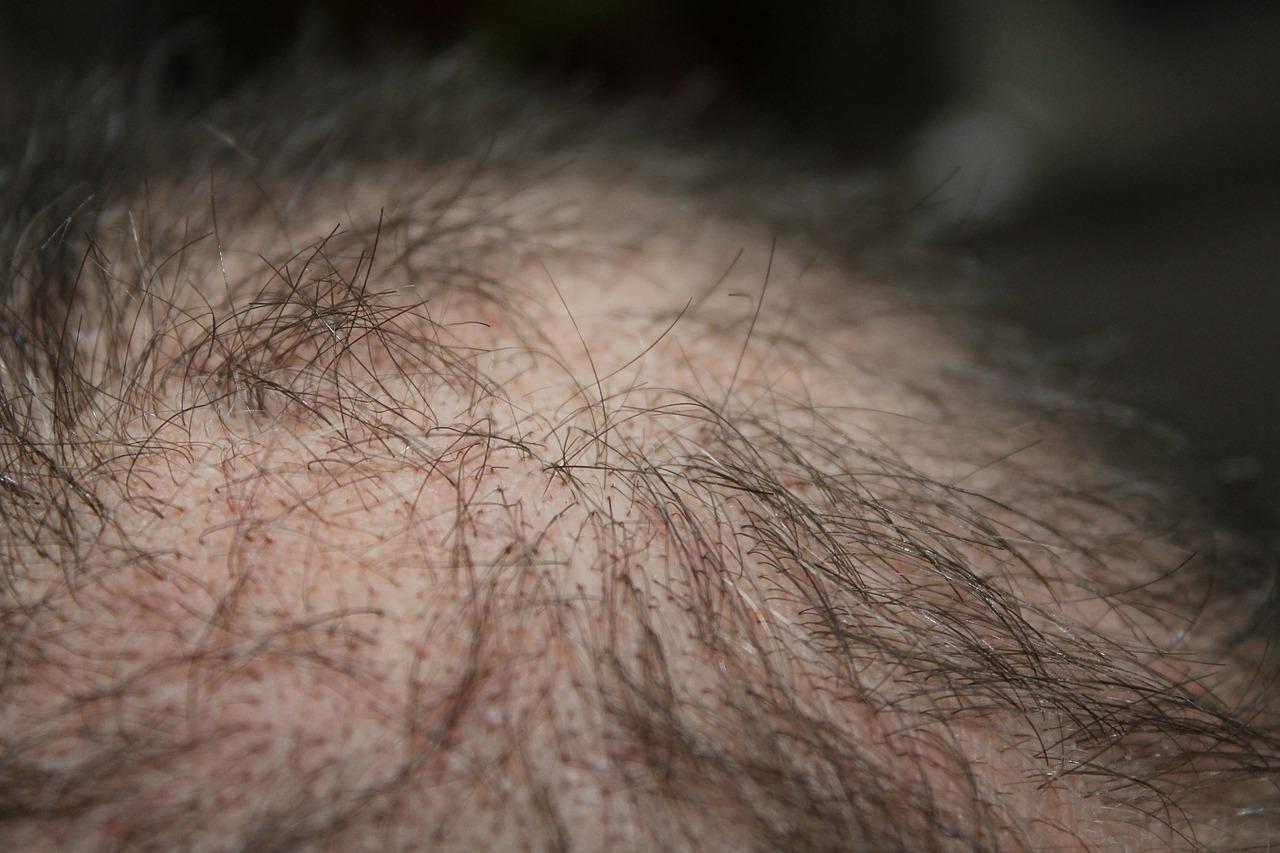
Common Allergic Skin Reactions
Allergic skin reactions can manifest in various ways:
- Hives: Raised, itchy welts
- Angioedema: Swelling beneath the skin
- Contact dermatitis: Rash from direct contact with an allergen
These reactions are typically more widespread and do not form the characteristic blisters associated with herpes.
Psoriasis: A Chronic Skin Condition
Psoriasis is a chronic autoimmune condition that can cause skin symptoms that may be mistaken for other conditions, including herpes.
Key Features of Psoriasis
Psoriasis is characterized by:
- Red, inflamed patches of skin
- Silvery scales
- Itching and burning sensation
- Can occur anywhere on the body, but commonly affects elbows, knees, and scalp
Unlike herpes, psoriasis does not cause blisters and is not contagious. It tends to be a long-term condition with periods of flare-ups and remission.
When to Seek Medical Attention
Distinguishing between herpes and other skin conditions can be challenging, and misdiagnosis can lead to improper treatment. It’s crucial to consult a healthcare provider if you experience persistent or concerning skin symptoms.

Signs That Warrant a Doctor’s Visit
Consider seeking medical attention if you experience:
- Recurrent outbreaks of blisters or sores
- Skin changes accompanied by fever or other systemic symptoms
- Rashes that don’t respond to over-the-counter treatments
- Any skin condition that causes significant discomfort or interferes with daily activities
A healthcare provider can perform tests to accurately diagnose herpes or other skin conditions and recommend appropriate treatment options.
Treatment Options for Various Skin Conditions
The treatment for skin conditions varies depending on the underlying cause. Understanding the different approaches can help manage symptoms effectively.
Herpes Treatment
Herpes is typically treated with antiviral medications, which can help:
- Reduce the severity and duration of outbreaks
- Suppress future outbreaks
- Lower the risk of transmission to others
Common antiviral medications for herpes include acyclovir, valacyclovir, and famciclovir.
Managing Other Skin Conditions
Treatment for non-herpes skin conditions may include:
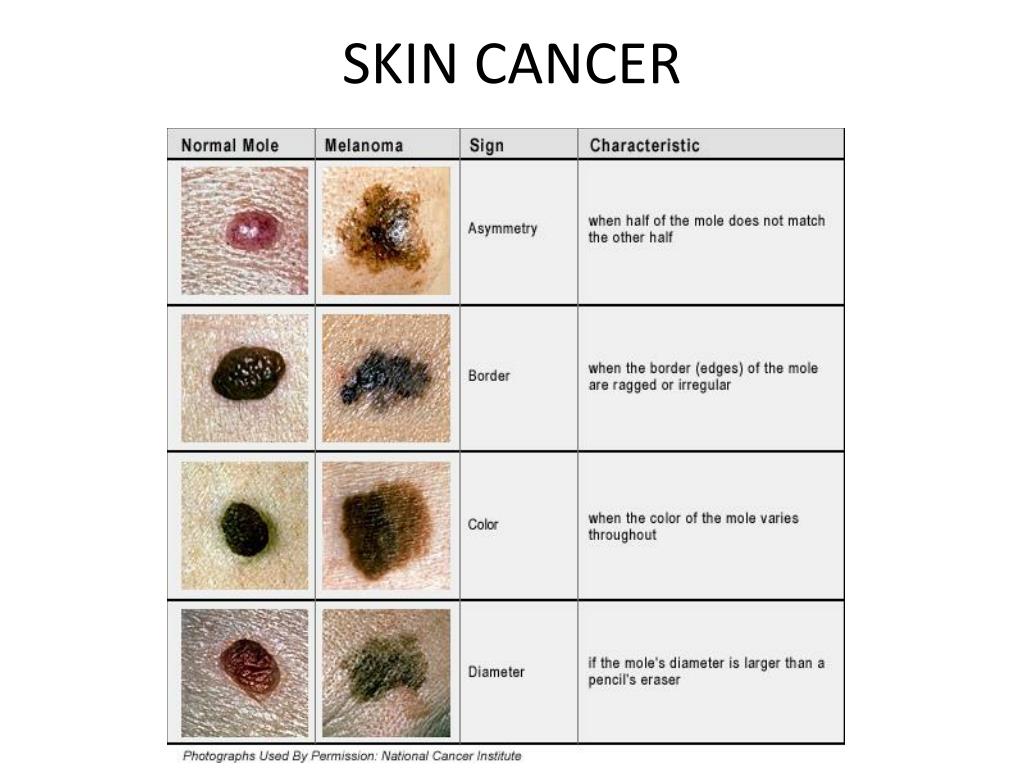
- Topical corticosteroids for dermatitis and psoriasis
- Antifungal creams for jock itch and other fungal infections
- Antihistamines for allergic reactions
- Moisturizers and gentle skin care for eczema
In some cases, prescription medications or more advanced treatments may be necessary for severe or persistent conditions.
Prevention Strategies for Skin Health
While not all skin conditions are preventable, there are steps you can take to maintain healthy skin and reduce the risk of certain issues.
General Skin Care Tips
To promote overall skin health:
- Keep skin clean and moisturized
- Protect skin from sun damage with sunscreen and protective clothing
- Avoid known irritants and allergens
- Maintain a healthy diet and stay hydrated
- Manage stress, which can exacerbate many skin conditions
Preventing Herpes Transmission
To reduce the risk of herpes transmission:
- Avoid skin-to-skin contact during outbreaks
- Use barrier methods during sexual activity
- Disclose herpes status to sexual partners
- Consider suppressive therapy if outbreaks are frequent
By understanding the differences between herpes and other skin conditions, you can better identify potential issues and seek appropriate care. Remember that proper diagnosis by a healthcare professional is crucial for effective treatment and management of any skin concern.

Skin Rash vs. Herpes Rash: Distinguishing Factors and Symptoms
Skin Rash vs. Herpes Rash: Distinguishing Factors and Symptoms
- Health Conditions
- Featured
- Breast Cancer
- IBD
- Migraine
- Multiple Sclerosis (MS)
- Rheumatoid Arthritis
- Type 2 Diabetes
- Articles
- Acid Reflux
- ADHD
- Allergies
- Alzheimer’s & Dementia
- Bipolar Disorder
- Cancer
- Crohn’s Disease
- Chronic Pain
- Cold & Flu
- COPD
- Depression
- Fibromyalgia
- Heart Disease
- High Cholesterol
- HIV
- Hypertension
- IPF
- Osteoarthritis
- Psoriasis
- Skin Disorders and Care
- STDs
- Featured
- Discover
- Wellness Topics
- Nutrition
- Fitness
- Skin Care
- Sexual Health
- Women’s Health
- Mental Well-Being
- Sleep
- Product Reviews
- Vitamins & Supplements
- Sleep
- Mental Health
- Nutrition
- At-Home Testing
- CBD
- Men’s Health
- Original Series
- Fresh Food Fast
- Diagnosis Diaries
- You’re Not Alone
- Present Tense
- Video Series
- Youth in Focus
- Healthy Harvest
- No More Silence
- Future of Health
- Wellness Topics
- Plan
- Health Challenges
- Mindful Eating
- Sugar Savvy
- Move Your Body
- Gut Health
- Mood Foods
- Align Your Spine
- Find Care
- Primary Care
- Mental Health
- OB-GYN
- Dermatologists
- Neurologists
- Cardiologists
- Orthopedists
- Lifestyle Quizzes
- Weight Management
- Am I Depressed? A Quiz for Teens
- Are You a Workaholic?
- How Well Do You Sleep?
- Tools & Resources
- Health News
- Find a Diet
- Find Healthy Snacks
- Drugs A-Z
- Health A-Z
- Health Challenges
- Connect
- Breast Cancer
- Inflammatory Bowel Disease
- Psoriatic Arthritis
- Migraine
- Multiple Sclerosis
- Psoriasis
Medically reviewed by Alana Biggers, M. D., MPH — By Scott Frothingham — Updated on April 21, 2023
D., MPH — By Scott Frothingham — Updated on April 21, 2023
We include products we think are useful for our readers. If you buy through links on this page, we may earn a small commission Here’s our process.
Healthline only shows you brands and products that we stand behind.
Our team thoroughly researches and evaluates the recommendations we make on our site. To establish that the product manufacturers addressed safety and efficacy standards, we:
- Evaluate ingredients and composition: Do they have the potential to cause harm?
- Fact-check all health claims: Do they align with the current body of scientific evidence?
- Assess the brand: Does it operate with integrity and adhere to industry best practices?
We do the research so you can find trusted products for your health and wellness.
Read more about our vetting process.
Was this helpful?
Herpes sores can have a wet appearance and may crust when popped. Other causes of rash, including irritants and jock itch, may have a different appearance.
Other causes of rash, including irritants and jock itch, may have a different appearance.
Some people who develop an inflamed and painful skin rash may be concerned that it’s a herpes rash. To help you tell the difference, we’ll explore the physical appearance and symptoms of herpes in comparison to other common skin rashes.
Herpes
If you have “wet looking” fluid-filled blisters in the vicinity of your mouth or genitals, chances are you’ve been infected with the herpes virus. When popped, the sores will crust over.
There are two types of herpes:
- HSV-1 (Herpes simplex virus type 1) causes sores (cold sores or fever blisters) around the mouth and lips.
- HSV-2 (Herpes simplex virus type 2) causes sores around the genitals.
Although many people with the herpes virus never experience noticeable symptoms, the most common symptoms include:
- fluid-filled blisters
- itching, burning skin before the sores appear
- flu-like symptoms
- discomfort while urinating
Rashes
A rash is an inflammation of the skin caused by a number of factors ranging from skin irritants to sickness.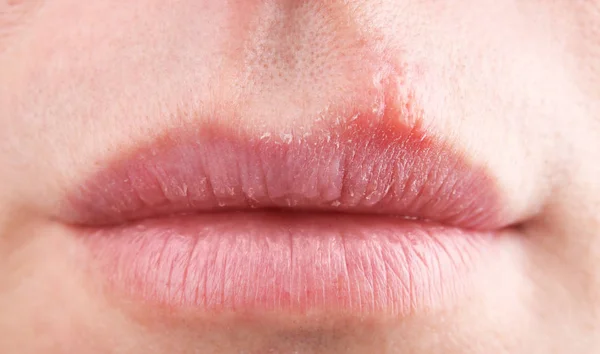 Rashes are commonly identified by symptoms including:
Rashes are commonly identified by symptoms including:
- redness
- swelling
- itching
- scaling
The symptoms of specific rashes are typically different from herpes, even though they might appear in similar areas of the body. Common conditions that may cause a skin rash include:
Dermatitis
Dermatitis is a skin condition that causes red, itchy, flaky skin. There are two types of dermatitis: contact and atopic.
Contact dermatitis is a rash that appears after your skin touches an irritant, such as a perfume or chemical. You’ll notice a rash appear where you touched the irritant, and blisters may also possibly form. A rash after exposure to poison ivy is one example of contact dermatitis.
Atopic dermatitis is also known as eczema. It’s a rash that occurs after exposure to an allergen. Symptoms include thick, scaly, red patches of skin across the body.
Unlike herpes, dermatitis can occur anywhere on the body. Contact dermatitis will likely go away after exposure to the irritant has stopped and the skin is cleaned with a mild soap. Atopic dermatitis can be prevented by moisturizing the skin and avoiding triggers like hot showers and cold weather.
Atopic dermatitis can be prevented by moisturizing the skin and avoiding triggers like hot showers and cold weather.
Shingles
Shingles is a painful skin rash that is believed to be caused by the same virus that causes chicken pox — the varicella-zoster virus. Although shingles symptoms often include itching, fluid-filled blisters like herpes, the blisters usually appear in a band or in a small area on one side of a person’s face, neck, or body along with an angry rash.
- Treatment for shingles. There is no cure for shingles, but there are antiviral drugs such as Acyclovir (Zovirax) or Valacyclovir (Valtrex) that your doctor may prescribe to shorten healing time and reduce your risk for complications. Your doctor may also prescribe pain medication such as the topical numbing agent, lidocaine.
Jock itch
Jock itch is a fungal infection that typically looks like a red rash with a few small blisters near the edge of the rash. Unlike herpes, these blisters typically do not crust over. Also, herpes blisters often appear on the penis, while the rash associated with jock itch typically appears on the inner thighs and groin, but not the penis.
Also, herpes blisters often appear on the penis, while the rash associated with jock itch typically appears on the inner thighs and groin, but not the penis.
- Treatment for jock itch.Jock itch is often treated with two to four weeks of washing with an antifungal shampoo and the application of a topical antifungal cream.
Scabies
Scabies is a highly contagious skin infection caused by the Sarcoptes scabiei mite that burrows into your skin to lay eggs. While herpes is typically found in the mouth and genital area, scabies can be found anywhere on the body. A scabies infestation appears as redness or a rash, sometimes showing signs of small pimples, bumps, or blisters. Sores may appear when the area is scratched.
- Treatment for scabies.Your doctor will most likely prescribe a scabicide topical lotion or cream to kill the scabies mites and their eggs.
Genital warts
Resulting from infection from the human papillomavirus, genital warts are typically flesh-colored bumps that resemble cauliflower tops as opposed to the blisters caused by herpes.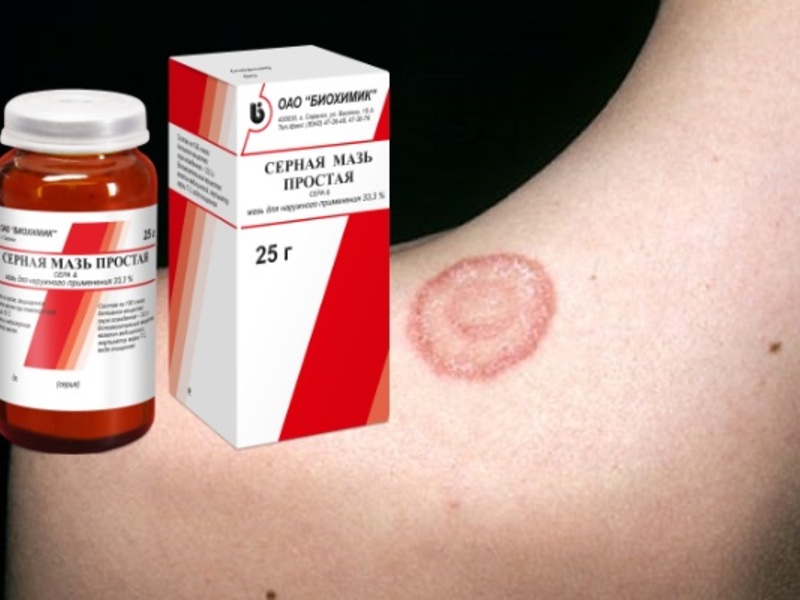
- Treatment for genital warts.Along with prescription topical medications, your doctor might suggest cryotherapy (freezing) or laser treatment to remove the warts. There is no cure for the human papillomavirus, so no treatment is guaranteed to remove the warts and keep them from coming back.
Razor burn
Shaving your pubic hair can often create skin irritation and ingrown hairs, resulting in red bumps that can be mistaken for herpes sores. Razor burn is an acne-like rash. Ingrown hairs look like pimples with a yellow center, while herpes sores look more like fluid-filled blisters with clear liquid.
- Treatment for razor burn. There are a number of ways people address razor burns, ranging from over-the-counter topical creams with hydrocortisone to home remedies such as the topical application of witch hazel or tea tree oil.
Shop for hydrocortisone.
Shop for witch hazel.
Shop for tea tree oil.:max_bytes(150000):strip_icc()/herpes-treatment-3133020_color1-5b85557ac9e77c00576df991-db4b169a38ac414cb2d752d033649f12.png)
Some rashes should be treated by your doctor. Set up an appointment with your doctor if:
- you’re uncomfortable to the point where you’re losing sleep or having trouble focusing on your daily activities
- you think you have herpes or another sexually transmitted disease (STD)
- you think your skin is infected
- you’ve found self-care ineffective
If you have a rash that you think could be herpes, look closely and compare the physical appearances and symptoms of your rash with those of herpes and other common rashes. Whatever your observations, it’s wise to discuss your concerns with your doctor who will have treatment suggestions for all skin inflammations.
Last medically reviewed on April 19, 2018
How we reviewed this article:
Healthline has strict sourcing guidelines and relies on peer-reviewed studies, academic research institutions, and medical associations. We avoid using tertiary references. You can learn more about how we ensure our content is accurate and current by reading our editorial policy.
- Atopic dermatitis. (n.d.). https://nationaleczema.org/eczema/types-of-eczema/atopic-dermatitis/
- Contact dermatitis. (n.d.). acai.org/allergies/types/skin-allergies/contact-dermatitis
- Contact dermatitis. (n.d.).
hopkinsmedicine.org/healthlibrary/conditions/adult/dermatology/contact_dermatitis_85,P00270 - Frequently asked questions about herpes (n.d.).
hopkinsmedicine.org/johns_hopkins_bayview/medical_services/specialty_care/infectious_diseases/center_for_reproductive_tract_infections/frequently_asked_questions_about_herpes.html - Genital herpes – CDC fact sheet. (2017).
cdc.gov/std/herpes/stdfact-herpes.htm - Herpes simplex: Overview. (n.d.). Mayo Clinic Staff. (2016). Dermatitis.
aad.org/public/diseases/contagious-skin-diseases/herpes-simplex#overviewhttps://www.mayoclinic.org/diseases-conditions/dermatitis-eczema/symptoms-causes/syc-20352380 - Mayo Clinic Staff.
 (2016). Dermatitis.
(2016). Dermatitis.
mayoclinic.org/diseases-conditions/dermatitis-eczema/symptoms-causes/syc-20352380 - Mayo Clinic Staff. (2016). Genital warts.
mayoclinic.org/diseases-conditions/genital-warts/diagnosis-treatment/drc-20355240 - Mayo Clinic Staff. (2018). Shingles.
mayoclinic.org/diseases-conditions/shingles/diagnosis-treatment/drc-20353060 - Scabies: Treatment (2016).
cdc.gov/parasites/scabies/treatment.html - Skin inflammation (rashes). (n.d.).
hopkinsmedicine.org/healthlibrary/conditions/adult/dermatology/skin_inflammation_rashes_85,p00309
Our experts continually monitor the health and wellness space, and we update our articles when new information becomes available.
Current Version
Apr 21, 2023
Written By
Scott Frothingham
Edited By
Heather Hobbs
Apr 19, 2018
Medically Reviewed By
Alana Biggers, MD, MPH
Share this article
Medically reviewed by Alana Biggers, M. D., MPH — By Scott Frothingham — Updated on April 21, 2023
D., MPH — By Scott Frothingham — Updated on April 21, 2023
Read this next
- Can You Get Herpes on the Buttocks?
Medically reviewed by Meredith Goodwin, MD, FAAFP
The herpes simplex virus can cause blisters or sores to erupt on various parts of the body, including the buttocks.
READ MORE
- Does Herpes Cause Discharge?
Medically reviewed by Valinda Riggins Nwadike, MD, MPH
Discharge can be a symptom for all people with herpes. How common it is and what that discharge looks like can vary among people with different types…
READ MORE
- Everything You Need to Know About Oral and Genital Herpes
Medically reviewed by Jenneh Rishe, RN
The herpes simplex virus, also known as HSV, is a viral infection that causes genital and oral herpes. Get the details on key signs, diagnosis, and…
READ MORE
- What Causes Lip Discoloration and How Do You Treat It?
Medically reviewed by Judith Marcin, M.D.

Discolored lips can be due to a number of reasons, from harmless staining to severe underlying conditions. If your lips turn blue and you’re having…
READ MORE
- How to Get Rid of a Blister
Medically reviewed by Elaine K. Luo, M.D.
Need to get rid of a blister fast? Learn why leaving it alone might be your best choice and how to safely drain one when you’re out of options.
READ MORE
- What Is Windburn and How Can I Get Relief?
Medically reviewed by Cynthia Cobb, DNP, APRN, WHNP-BC, FAANP
The burn you can get on a cold winter day is painful. We’ll help you find relief.
READ MORE
- Sunscreen: Does SPF Matter and Which One Should I Choose?
Medically reviewed by Cynthia Cobb, DNP, APRN, WHNP-BC, FAANP
Learn what SPF you should use, plus why SPF matters and tips for choosing sunscreen.
READ MORE
- What Are Freckles, Why Do They Appear, and More
Medically reviewed by Debra Sullivan, Ph.D., MSN, R.
 N., CNE, COI
N., CNE, COIFreckles are a result of genetics and too much sun exposure. Find out why they appear and what to do if you don’t want them.
READ MORE
- Shea Butter for Your Face: Benefits and Uses
Medically reviewed by Owen Kramer, MD
Shea butter has anti-inflammatory and healing properties. We’ll tell you about its many skincare benefits and possible side effects.
READ MORE
- Roseola (Sixth Disease): Symptoms, Treatment, and More
Medically reviewed by Mia Armstrong, MD
Roseola is viral infection commonly seen in children. It manifests as a high fever and skin rash. Find out how to identify and treat this condition.
READ MORE
Herpes skin rash: Symptoms, identification, and treatment
We include products we think are useful for our readers. If you buy through links on this page, we may earn a small commission Here’s our process.
Medical News Today only shows you brands and products that we stand behind.
Our team thoroughly researches and evaluates the recommendations we make on our site. To establish that the product manufacturers addressed safety and efficacy standards, we:
- Evaluate ingredients and composition: Do they have the potential to cause harm?
- Fact-check all health claims: Do they align with the current body of scientific evidence?
- Assess the brand: Does it operate with integrity and adhere to industry best practices?
We do the research so you can find trusted products for your health and wellness.
Read more about our vetting process.
Was this helpful?
Infection with the herpes simplex virus (HSV-1) can lead to a skin rash. Early signs include burning and tingling, after which sores appear that can turn into blisters or pustules. Treatment with antiviral drugs may shorten the healing time.
A herpes rash usually develops on the genitals or around the mouth, but it can occur nearly anywhere on the body.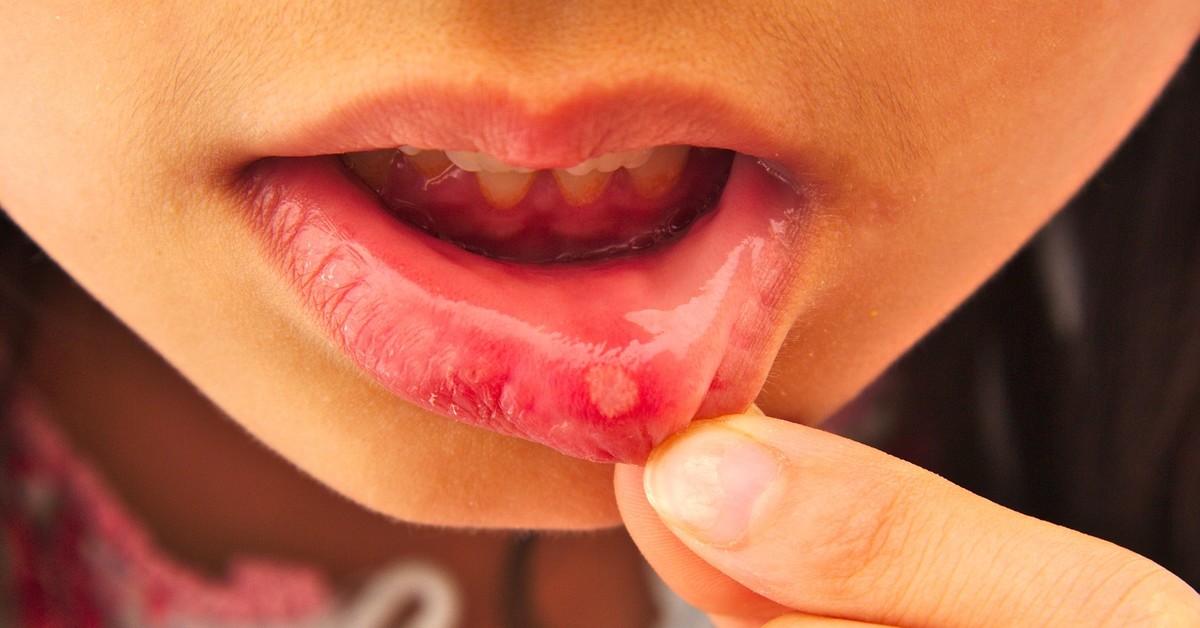
There are two types of HSV that can cause a skin rash in different areas: HSV-1 and HSV-2.
HSV-1 typically causes orolabial herpes. It spreads in the saliva and tends to affect the area around the mouth and nose.
HSV-2 typically causes genital herpes and usually spreads through sexual contact. The rash appears around the genitals. Sometimes, it is also responsible for orolabial herpes.
This article will explain the symptoms of a herpes skin rash and explore its causes and treatments. It will also examine some other possible causes of skin complaints that may look similar to herpes.
Share on PinterestHerpes skin rashes are common around the mouth but can appear almost anywhere on the body.
Image credit: Jojo, 2006
Herpes causes small sores to appear on the skin. These sores usually develop around the mouth and nose, but they can appear nearly anywhere on the body, including the fingers. Where the rash appears will depend on where and how the person contracted the infection.
The first symptom of a herpes outbreak tends to be a tingling, burning, or itching sensation in the affected area. This initial symptom might occur a day or so before the sores appear.
The sores can be tender, painful, and tingly. They tend to look like clusters of small, fluid filled blisters that become pustules. For a few days to a week, they will break open, ooze fluid, and form a crust before healing over. The rash typically lasts for around 7–10 days.
The first time a rash appears, it may last for different lengths of time depending on the type of herpes. For example, oral herpes symptoms tend to clear up in 2–3 weeks, while genital herpes symptoms usually clear up in 2–6 weeks.
When someone experiences a herpes outbreak for the first time, they may also experience some or all of the following symptoms:
- fever
- swollen, red gums
- swollen lymph glands
Once the virus is inside the body, it invades the nerves that supply the area of the skin it affects and stays there for life. There is currently no cure for this virus, and it tends to reactivate and cause symptoms every so often.
There is currently no cure for this virus, and it tends to reactivate and cause symptoms every so often.
The first outbreak is usually the worst. Although the symptoms of the virus do tend to come back every so often throughout the rest of a person’s life, they are not typically as severe on subsequent occasions.
Learn more about what herpes looks like here.
Herpes rashes tend to look like clusters of small, fluid filled blisters on a small area of the body.
Some other skin conditions that may resemble herpes include:
Contact dermatitis
Having an allergic reaction to an irritant can cause allergic contact dermatitis. Common irritants include antibiotic creams, cosmetics, shampoos, and perfumes. In infants, contact dermatitis may develop in the diaper area.
Contact dermatitis can cause flushing, swelling, and even blistering in the area it affects.
Shingles
Share on PinterestA person with shingles may experience a rash of fluid filled blisters.
Shingles causes a rash of blisters to occur on the skin. The same virus that causes chickenpox (the varicella-zoster virus) causes shingles.
The first symptom of shingles tends to be a severe burning or tingling pain on one side of the body. A rash of fluid filled blisters follows a few days to a week later.
These blisters tend to appear in one area of the body, most commonly one side of the trunk, near the waistline. They may be tender to the touch or painful.
The condition usually clears up within 3–5 weeks.
Scabies
An infestation of a microscopic parasite known as the human itch mite, or Sarcoptes scabiei, is what causes scabies.
The mite will burrow into the skin to lay its eggs and deposits its feces. Its presence causes an extremely itchy rash that resembles little pimples, creating flushed, scaly areas on the skin.
Doctors use a class of drugs called scabicides to treat these infestations. These drugs are only available with a prescription.
There are two types of HSV that cause herpes. Although these types are closely related and both spread through bodily fluids and human contact, they transmit in different ways.
The virus does not need to be causing any symptoms for it to spread to another person.
HSV-1, or oral herpes
Most carriers of HSV-1 contracted it when they were infants or children. It can spread through:
- having skin-to-skin contact with someone who has the virus
- kissing
- sharing items such as lip balm, tableware, or toothbrushes
HSV-2, or genital herpes
Sexual contact tends to be how HSV-2 spreads. HSV-1 can also cause genital herpes, and it can spread in saliva during oral sex. HSV-2 can also pass to an infant during childbirth.
Both forms of the virus enter the nerve cells of the body, where they will remain for life. The virus tends to lie dormant, or asleep, in the cells until something activates it and causes an outbreak of symptoms.
Factors that can lead to an outbreak include:
- emotional stress
- illness
- fever
- exposure to the sun
- menstruation
- surgery
Share on PinterestIf a person with a weakened immune system experiences a herpes skin rash, they should speak to their doctor.
For otherwise healthy people, a herpes skin rash is not usually anything to worry about. The sores can be painful and uncomfortable, but they typically go away by themselves. Medications to treat them are available from drugstores.
The virus can cause complications in some people. Anyone with a long-term health condition or weakened immune system who thinks that they may have herpes should speak to their doctor.
People with cancer, HIV, or AIDS and anyone who has recently had an organ transplant should seek urgent medical attention if they think that they may have herpes.
Anyone who suspects that something other than herpes — such as dermatitis, shingles, or scabies — is causing their rash can talk to their doctor about diagnosis.
Herpes is a common virus that can cause a rash of blistering sores on the skin. These tend to develop around the mouth or genitals but can appear almost anywhere on the body.
There is currently no cure for the virus, and carriers tend to experience symptom outbreaks at various times throughout their life.
The clusters of fluid filled blisters may be painful, but they are usually harmless. Antiviral treatments that can help ease the symptoms and shorten the duration of an outbreak are available in many drugstores.
Treatment of the Coxsackie virus in Moscow: a pediatrician in the clinic and at home, accurate diagnosis
We treat children according to the principles of evidence-based medicine: we choose only those diagnostic and treatment methods that have proven their effectiveness. We will never prescribe unnecessary examinations and medicines!
Make an appointment via WhatsApp
Prices
Doctors
The first children’s clinic of evidence-based medicine in Moscow
No unnecessary examinations and drugs! We will prescribe only what has proven effective and will help your child.
Treatment according to world standards
We treat children with the same quality as in the best medical centers in the world.
The best team of doctors in Fantasy!
Pediatricians and subspecialists Fantasy – highly experienced doctors, members of professional societies. Doctors constantly improve their qualifications, undergo internships abroad.
Ultimate safety of treatment
We have made children’s medicine safe! All our staff work according to the most stringent international standards JCI
We have fun, like visiting best friends
Game room, cheerful animator, gifts after the reception. We try to make friends with the child and do everything to make the little patient feel comfortable with us.
You can make an appointment by calling
or by filling out the form on the website
Other Pediatric Services
Pediatrician’s consultation
Child Health Management Program
Frequent calls
Acute bronchiolitis in children: diagnosis and treatment
SARS
Angina streptococcal tonsillitis
Frequently ill child
Intestinal infections
Rash in a child
Colic
Feeding problems
Prolonged cough in a child: diagnosis and treatment
Acute bronchitis in children: diagnosis and treatment
Pneumonia (pneumonia) in children: diagnosis and treatment
False croup in a child
The child was bitten by a tick! What to do?
Online payment
Documents online
Online services
After dental treatment, herpes on the lip.
 Did the dentist infect it?
Did the dentist infect it?
A “cold” on the lip is usually caused by the herpes simplex virus type 1 (HSV-1) and this disease is common. According to the World Health Organization, up to 67% of the adult population of the planet is infected with herpes simplex. The virus is also highly contagious.
True, he is, in fact, in a sleeping state. And it is “activated” with a decrease in immunity, in severe stressful situations. Yes, even with a common cold.
However, it is almost impossible to catch it at the dentist’s office. But, nevertheless, sometimes after dental treatment, some patients find that a herpetic vesicle has jumped on the lip. And they begin to suspect the doctor. Let’s see what the real reason might be.
Why did herpes appear after dental treatment? Is the dentist to blame? Photo: Yandex. Pictures
Why does herpes appear on the lip
Bubbles on the lips can appear in two cases:
- with primary infection with the HSV-1 virus,
- if a “sleeping” virus that was already present in the body was activated (as a rule, primary infection occurs in childhood and most often goes unnoticed).

Primary infection can occur by airborne or household contact. That is, through common towels and napkins, when using the same dishes and cutlery, lipstick, makeup brushes, through a toothbrush, through kisses, etc.
And the cause of exacerbation and new rashes on the lips is the weakening of the immune system – against the background of SARS or with severe stress. Also, herpetic eruptions can be provoked by trauma to the mucous membranes or skin of the lips with simultaneous contact with the pathogen. For example, if the virus itself was not active in the body, but the person was in contact with another infected person, whose disease is now exacerbated.
Is the dentist to blame for the appearance of a “cold” on the lips?
In 99% of cases, no.
We, like most of our fellow doctors, follow very strict health and safety regulations. Smile-at-Once always maintains a high level of sterility in offices and clinic lobbies. And for each patient, we use clean individual sets of instruments that are disposable or undergo multi-stage processing. And this is actually the norm for ANY dentistry.
And this is actually the norm for ANY dentistry.
Therefore, the likelihood of a viral or bacterial infection in such conditions is reduced to almost zero – both by federal law and for personal reasons. After all, no doctor wants to put themselves and their loved ones at risk.
Clinics MUST take maximum precautions against any disease that is easily transmitted from person to person. From the coronavirus, by the way, too! Photo: Smile-at-Once
If the dentist is not to blame, what is the reason?
Often the logical fallacy “After means due” comes into play. A person unconsciously believes that if one event occurred immediately after another, then the first is necessarily the cause of the second. But in fact, this is not entirely correct.
Visiting the dentist is still a stressful experience for many people. Or there was some kind of stressful situation at home, at work. Or you caught a viral infection – for example, you had a runny nose a few days before visiting the doctor. Not strong, but the body had enough to fight the virus. And all this, as we noted above, can provoke the activation of “sleeping” herpes.
Not strong, but the body had enough to fight the virus. And all this, as we noted above, can provoke the activation of “sleeping” herpes.
Or perhaps you just didn’t pay attention to the early symptoms of herpes before your appointment with the dentist – for example, itching or burning on the lip had already begun. There may have been contact with an infected person outside the clinic. There are actually quite a few reasons.
And yet: can the dentist be to blame?
Unfortunately, after all, this reason cannot be dismissed – 1% remains. Unscrupulous clinics and specific dentists, alas, can cause herpes infection. Dirty instrument or gloves, doctor’s refusal to wear a mask (if the doctor has HSV-1 at this moment in an active form), careless handling of the instrument, etc. Sometimes a patient with an active, but so far invisible outward form of the disease, may have been in the dentist’s chair before you. And after it they did not have time / forgot or simply did not want to carry out processing. And the infection was passed on to you.
And the infection was passed on to you.
When visiting the clinic and the doctor, be sure to pay attention to the cleanliness of the premises. Are hygiene measures being followed? Were the contact surfaces wiped before you? Have the doctor and assistant changed gloves, masks? Did you wash your hands before treatment? Do you open a craft bag or a tray with clean tools? If you are concerned about dirt, stains, the condition of the instrument, feel free to get up from your chair and refuse treatment.
Is it possible to treat teeth when herpes on the lips is active?
Since the virus is highly contagious, we do not recommend treating teeth when there are rashes on the lips or herpetic stomatitis is diagnosed. Such a patient can cause infection of healthy people, as well as earn complications for himself. For example, if an infection gets into the deep parts of the gums or under the tooth roots, then inflammation may begin.
If you notice any manifestations of herpes on the lips, it is better to call the clinic and reschedule the visit for 10-14 days.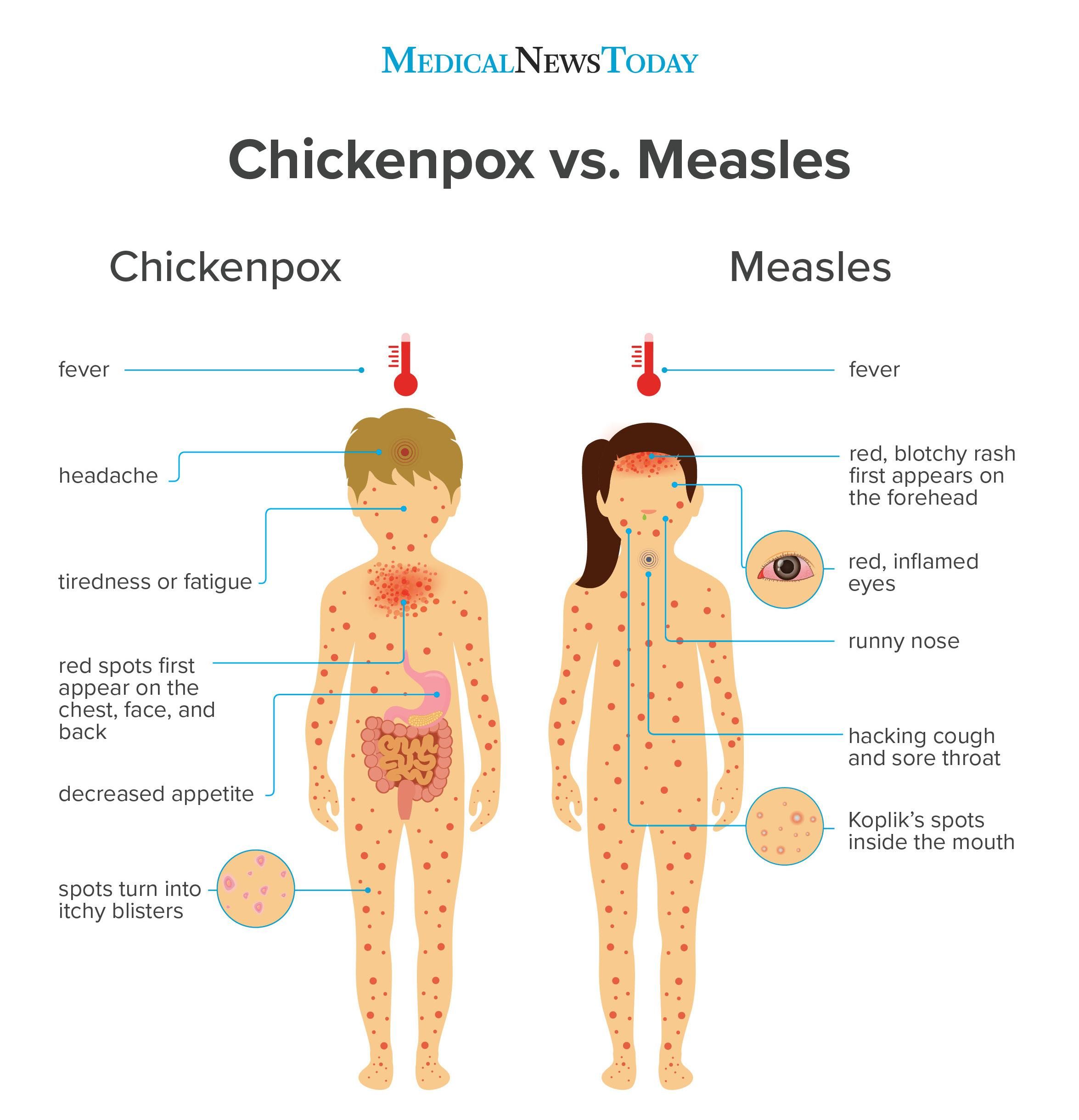

 (2016). Dermatitis.
(2016). Dermatitis.
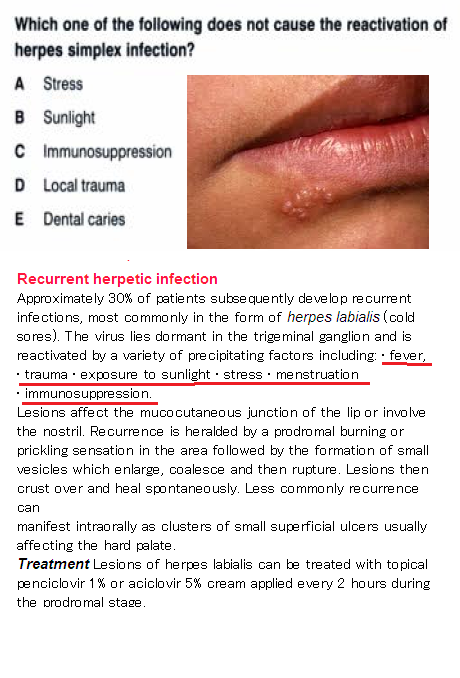 N., CNE, COI
N., CNE, COI